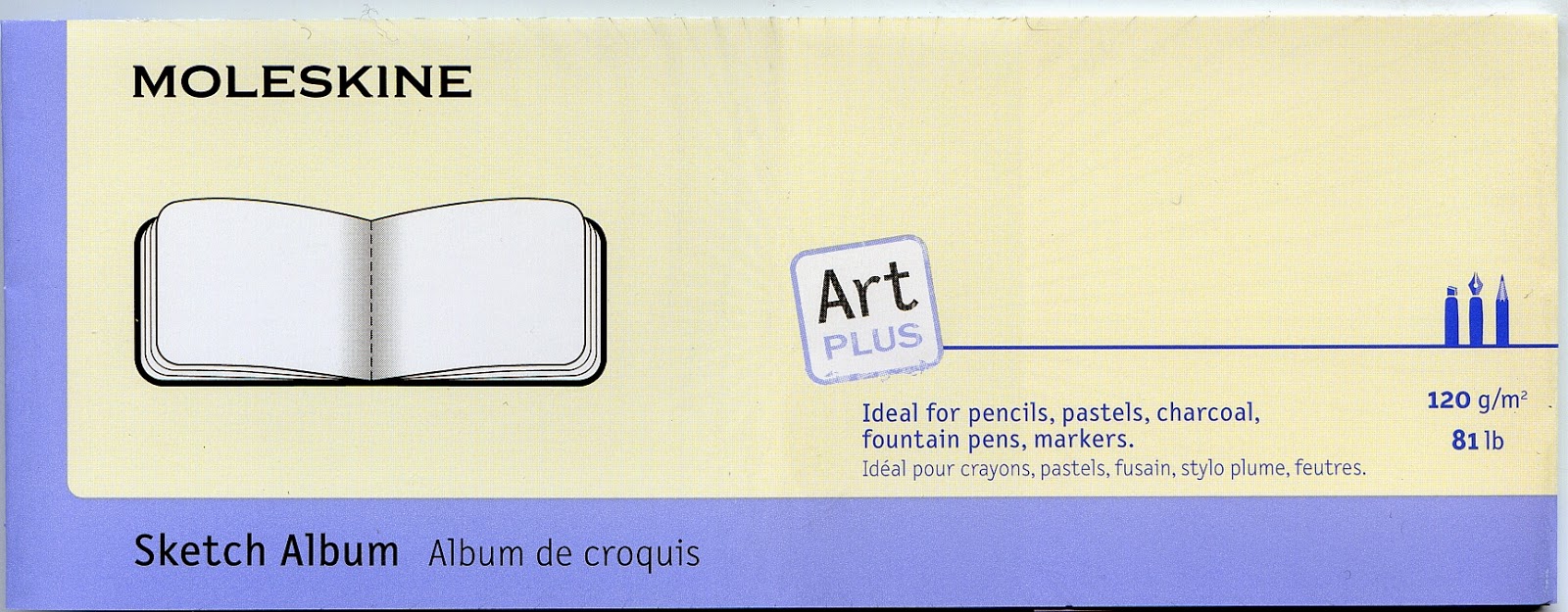 |
| 3/22/15 Private Reserve Velvet Black ink, Pilot Petit1 fountain pen, Moleskine Art Plus Sketch Album (sketched from Smithsonian magazine photo) |
The University Bookstore (one of Seattle’s endangered breed of independent booksellers) probably
has the largest brick-and-mortar Moleskine collection in the city. Back when I
was using Moleskines regularly for journals and planners, it was great to have
such a broad selection there. It’s been a long time since I’ve used or cared
about anything with the Moleskine name, but I was at the store recently, so I
thought I’d take a look.
 |
| Moleskine Art Plus Sketch Album label |
I spotted Moleskine’s relatively new “Art Plus” line, which includes
a watercolor sketchbook that Liz Steel
and other sketchers have already panned, so I didn’t even look at it. But a
pocket-size softcover book called an Art Plus Sketch Album caught my eye. Its
paper cover makes it very thin (1/4 inch) and lightweight. I’m not crazy about the
landscape format, but it’s not available in the portrait format that I prefer.
(I rarely sketch a double spread horizontally, and the format is awkward to
hold in either direction when it’s bound on the short side.) Another anomaly is
that every page is perforated. (I guess if I particularly liked a sketch or
someone else did, I could tear it out easily and frame it or give it away! Not
likely.) Though my expectations of its paper were very low, I thought its size
and thin profile might have possibilities as an everyday-carry sketchbooklet.
 |
| Reverse side of sketch at top of page. The fountain pen ink bled wherever I touched it with a waterbrush. |
At least the paper met my expectations. It’s the typical
Moleskine ivory color, blank and 81 pound in weight – definitely heavier than
the stuff that’s in Moleskine’s traditional (non-art) notebooks and planners,
but also much lighter than the weird, manila-folder-like stuff that’s in the classic “sketchbook” (which has been rebranded to be
part of the Art Plus line). The smooth surface isn’t bad with a fountain pen –
no bleeding or feathering evident. But as soon as I touched it with a
waterbrush, the ink sank straight into the paper, leaving strange blotches (see top of page) instead of blurring into a pleasing wash. (The label says, “Ideal for pencils,
pastels, charcoal, fountain pens, markers” – nothing about a wash or liquid –
so I can’t accuse them of false advertising.) Wherever I put water on the ink,
it bled through to the other side (see above).
 |
| 3/23/15 Zebra brush pen (sketched from Smithsonian magazine photo) |
With a Zebra brush pen (sketch at right), which contains waterproof ink, it
bled through slightly even without putting water on it (although that degree of
bleeding is probably acceptable for the casual sketches I’d be likely to put in
this sketchbook).
One positive thing I can say is that the paper is sufficiently
opaque that there’s very little ghosting (in the image below, I’ve circled a
spot where I can barely see the sketch on the next page showing through). It’s definitely
acceptable for drawing on both sides – as long as I use dry media or ink
without washing it. If I could simply get over my preference for shading ink
drawings with a wash, or if I switch to pencil, this (and many other) pocket
notebooks would easily meet my needs. Alas. . . .
 |
| If you look carefully inside the circle, you can barely see ghosting from the sketch on the following page showing through. |
No comments:
Post a Comment